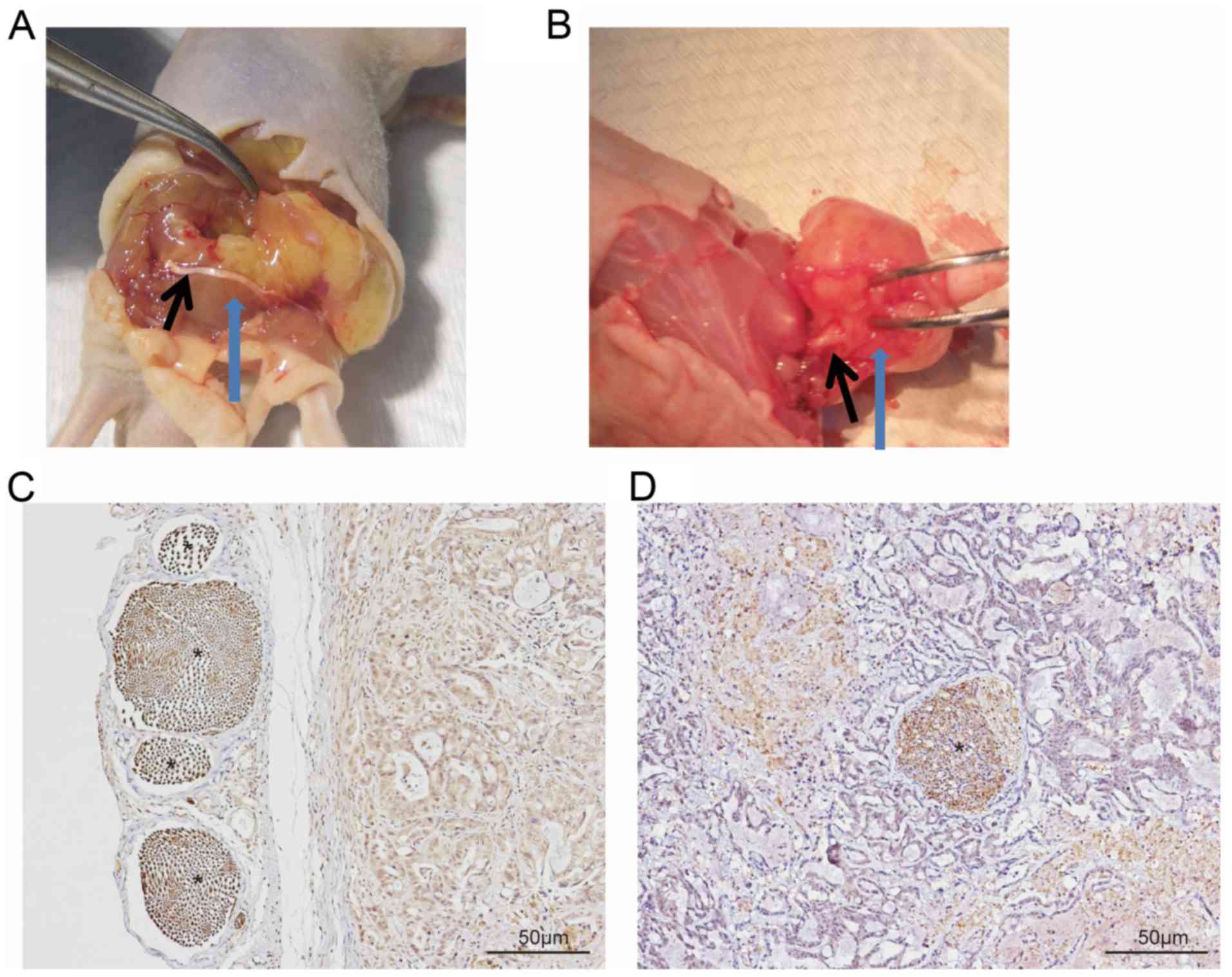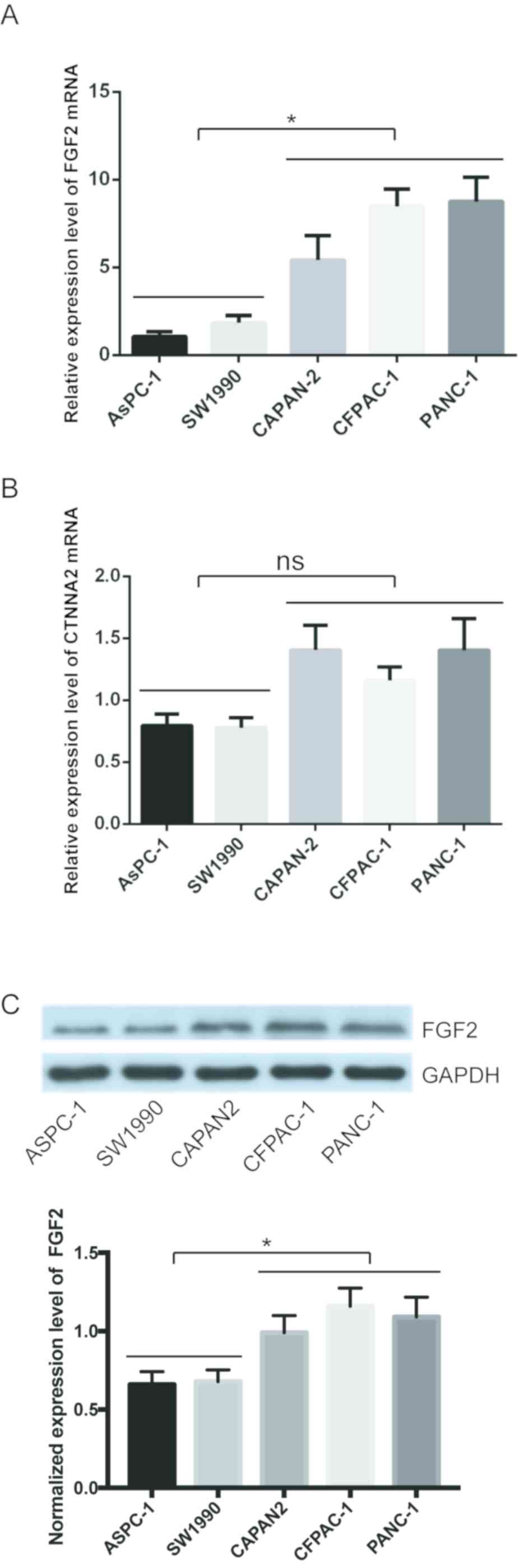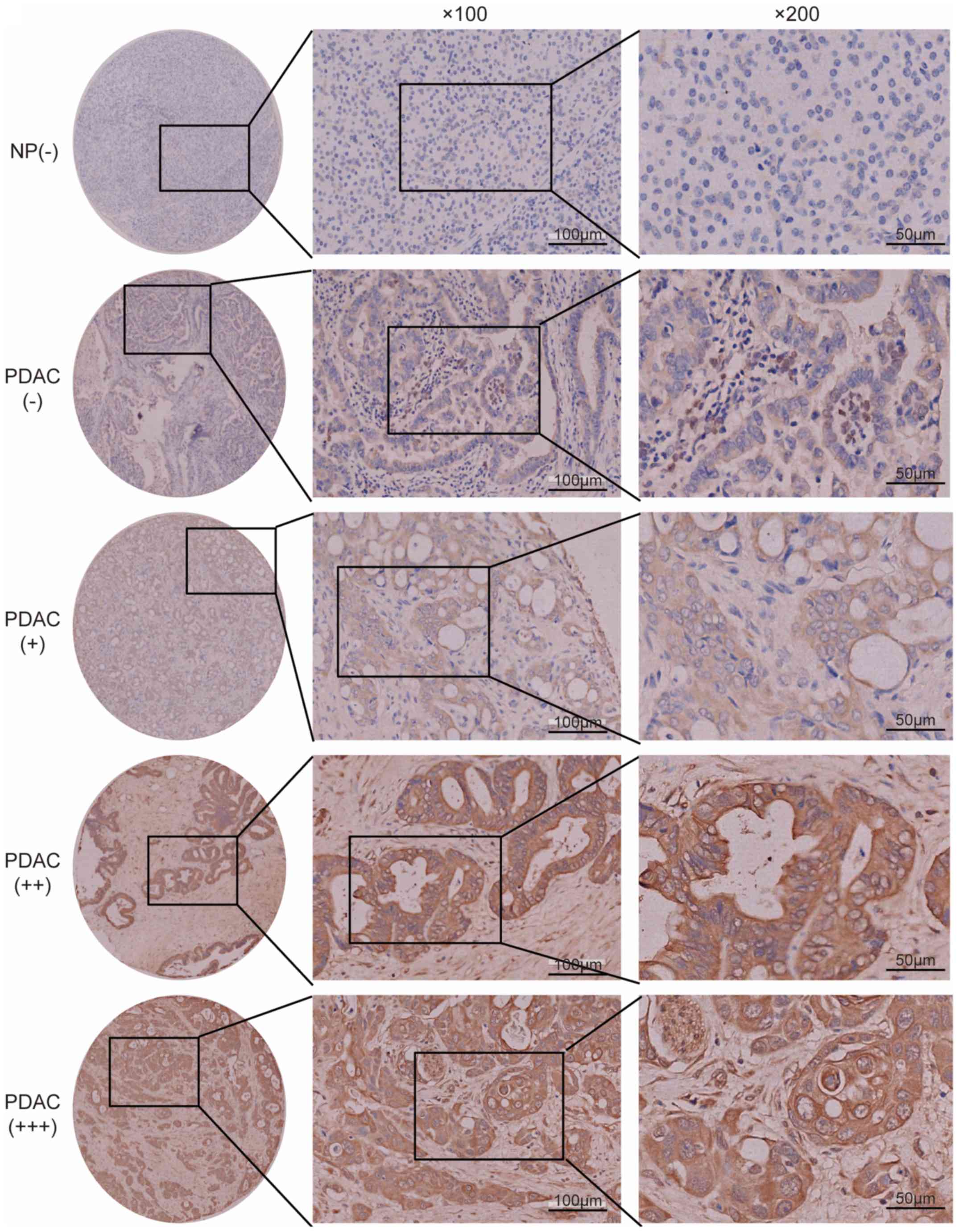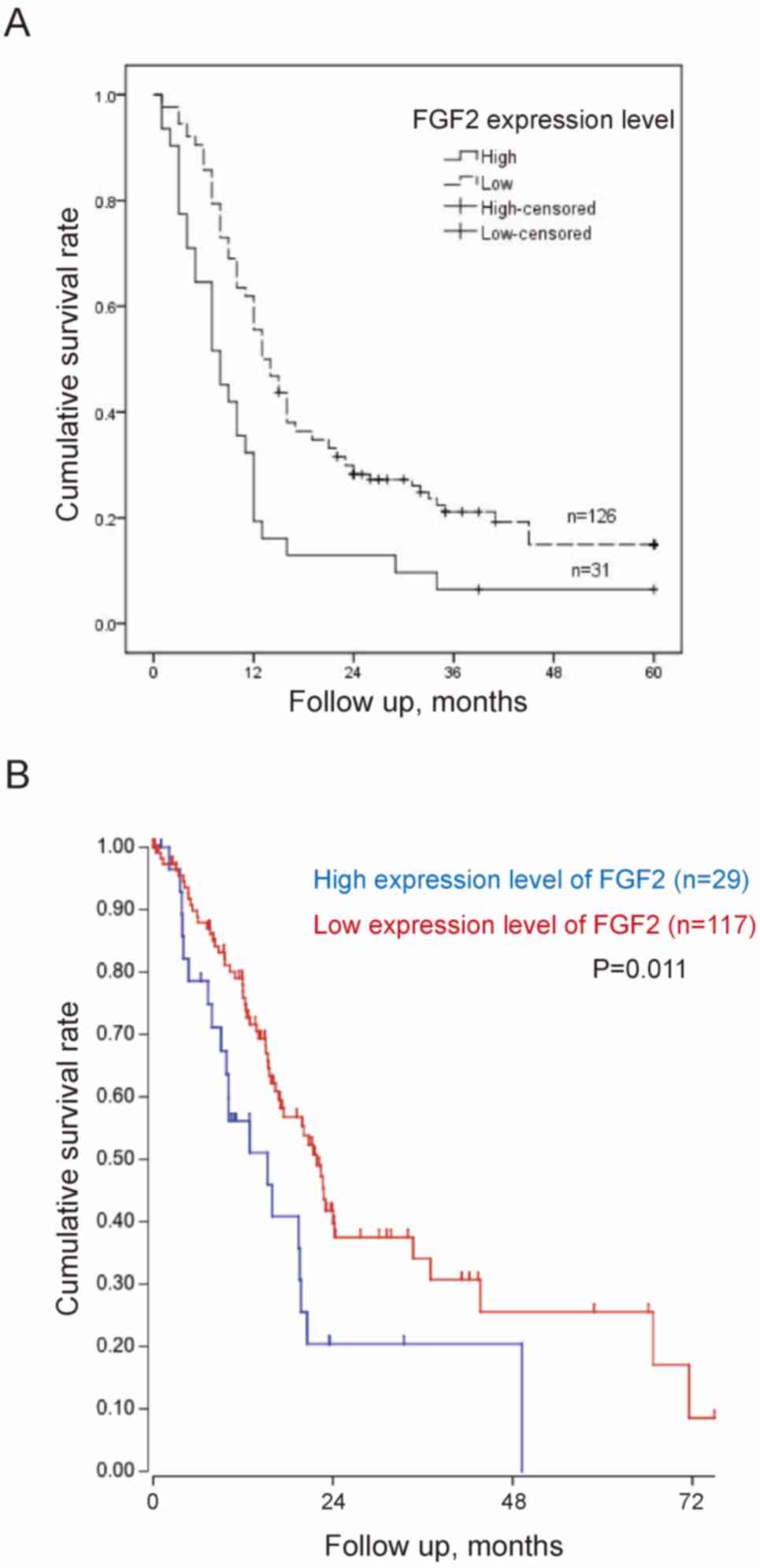|
1
|
Liebig C, Ayala G, Wilks JA, Berger DH and
Albo D: Perineural invasion in cancer: A review of the literature.
Cancer. 115:3379–3391. 2009. View Article : Google Scholar : PubMed/NCBI
|
|
2
|
Bapat AA, Hostetter G, Von Hoff DD and Han
H: Perineural invasion and associated pain in pancreatic cancer.
Nat Rev Cancer. 11:695–707. 2011. View
Article : Google Scholar : PubMed/NCBI
|
|
3
|
Zhang JF, Hua R, Sun YW, Liu W, Huo YM,
Liu DJ and Li J: Influence of perineural invasion on survival and
recurrence in patients with resected pancreatic cancer. Asian Pac J
Cancer Prev. 14:5133–5139. 2013. View Article : Google Scholar : PubMed/NCBI
|
|
4
|
Zhu Z, Friess H, diMola FF, Zimmermann A,
Graber HU, Korc M and Büchler MW: Nerve growth factor expression
correlates with perineural invasion and pain in human pancreatic
cancer. J Clin Oncol. 17:2419–2428. 1999. View Article : Google Scholar : PubMed/NCBI
|
|
5
|
Stopczynski RE, Normolle DP, Hartman DJ,
Ying H, DeBerry JJ, Bielefeldt K, Rhim AD, DePinho RA, Albers KM
and Davis BM: Neuroplastic changes occur early in the development
of pancreatic ductal adenocarcinoma. Cancer Res. 74:1718–1727.
2014. View Article : Google Scholar : PubMed/NCBI
|
|
6
|
Koide N, Yamada T, Shibata R, Mori T,
Fukuma M, Yamazaki K, Aiura K, Shimazu M, Hirohashi S, Nimura Y and
Sakamoto M: Establishment of perineural invasion models and
analysis of gene expression revealed an invariant chain (CD74) as a
possible molecule involved in perineural invasion in pancreatic
cancer. Clin Cancer Res. 12:2419–2426. 2006. View Article : Google Scholar : PubMed/NCBI
|
|
7
|
Abiatari I, DeOliveira T, Kerkadze V,
Schwager C, Esposito I, Giese NA, Huber P, Bergman F, Abdollahi A,
Friess H and Kleeff J: Consensus transcriptome signature of
perineural invasion in pancreatic carcinoma. Mol Cancer Ther.
8:1494–1504. 2009. View Article : Google Scholar : PubMed/NCBI
|
|
8
|
Gil Z, Cavel O, Kelly K, Brader P, Rein A,
Gao SP, Carlson DL, Shah JP, Fong Y and Wong RJ: Paracrine
regulation of pancreatic cancer cell invasion by peripheral nerves.
J Natl Cancer Inst. 102:107–118. 2010. View Article : Google Scholar : PubMed/NCBI
|
|
9
|
Shain AH, Giacomini CP, Matsukuma K,
Karikari CA, Bashyam MD, Hidalgo M, Maitra A and Pollack JR:
Convergent structural alterations define SWItch/Sucrose
NonFermentable (SWI/SNF) chromatin remodeler as a central tumor
suppressive complex in pancreatic cancer. Proc Natl Acad Sci USA.
109:E252–E259. 2012. View Article : Google Scholar : PubMed/NCBI
|
|
10
|
R Core Team, . R: A language and
environment for statistical computing. R foundation for statistical
computing; Vienna, Austria: ISBN 3-900051-07-0. 2012,
|
|
11
|
Yang MW, Tao LY, Jiang YS, Yang JY, Huo
YM, Liu DJ, Li J, Fu XL, He R, Lin C, et al: Perineural invasion
reprograms the immune microenvironment through cholinergic
signaling in pancreatic ductal adenocarcinoma. Cancer Res.
80:1991–2003. 2020.PubMed/NCBI
|
|
12
|
Xia J, Gill EE and Hancock RE:
NetworkAnalyst for statistical, visual and network-based
meta-analysis of gene expression data. Nat Protoc. 10:823–844.
2015. View Article : Google Scholar : PubMed/NCBI
|
|
13
|
Xia J, Benner MJ and Hancock RE:
NetworkAnalyst-integrative approaches for protein-protein
interaction network analysis and visual exploration. Nucleic Acids
Res. 42((Web Server Issue)): W167–W174. 2014. View Article : Google Scholar : PubMed/NCBI
|
|
14
|
Yang JY, Jiang SH, Liu DJ, Yang XM, Huo
YM, Li J, Hua R, Zhang ZG and Sun YW: Decreased LKB1 predicts poor
prognosis in pancreatic ductal adenocarcinoma. Sci Rep.
5:105752015. View Article : Google Scholar : PubMed/NCBI
|
|
15
|
Amin MB, Edge S, Greene F, et al: AJCC
cancer staging manual. 8th. New York, Springer: 2017, View Article : Google Scholar
|
|
16
|
Yan TT, Fu XL, Li J, Bian YN, Liu DJ, Hua
R, Ren LL, Li CT, Sun YW, Chen HY, et al: Downregulation of RPL15
may predict poor survival and associate with tumor progression in
pancreatic ductal adenocarcinoma. Oncotarget. 6:37028–37042. 2015.
View Article : Google Scholar : PubMed/NCBI
|
|
17
|
Livak KJ and Schmittgen TD: Analysis of
relative gene expression data using real-time quantitative PCR and
the 2(-Delta Delta C(T)) method. Methods. 25:402–408. 2001.
View Article : Google Scholar : PubMed/NCBI
|
|
18
|
Alhasan SF, Haugk B, Ogle LF, Beale GS,
Long A, Burt AD, Tiniakos D, Televantou D, Coxon F, Newell DR, et
al: Sulfatase-2: A prognostic biomarker and candidate therapeutic
target in patients with pancreatic ductal adenocarcinoma. Br J
Cancer. 115:797–804. 2016. View Article : Google Scholar : PubMed/NCBI
|
|
19
|
Kemik O, Kemik AS, Sümer A, Dulger AC,
Adas M, Begenik H, Hasirci I, Yilmaz O, Purisa S, Kisli E, et al:
Levels of matrix metalloproteinase-1 and tissue inhibitors of
metalloproteinase-1 in gastric cancer. World J Gastroenterol.
17:2109–2112. 2011. View Article : Google Scholar : PubMed/NCBI
|
|
20
|
Xu Q, Wang Z, Chen X, Duan W, Lei J, Zong
L, Li X, Sheng L, Ma J, Han L, et al: Stromal-derived
factor-1α/CXCL12-CXCR4 chemotactic pathway promotes perineural
invasion in pancreatic cancer. Oncotarget. 6:4717–4732. 2015.
View Article : Google Scholar : PubMed/NCBI
|
|
21
|
Zhang S, Qi L, Li M, Zhang D, Xu S, Wang N
and Sun B: Chemokine CXCL12 and its receptor CXCR4 expression are
associated with perineural invasion of prostate cancer. J Exp Clin
Cancer Res. 27:622008. View Article : Google Scholar : PubMed/NCBI
|
|
22
|
Shen Z, Li T, Chen D, Jia S, Yang X, Liang
L, Chai J, Cheng X, Yang X and Sun M: The CCL5/CCR5 axis
contributes to the perineural invasion of human salivary adenoid
cystic carcinoma. Oncol Rep. 31:800–806. 2014. View Article : Google Scholar : PubMed/NCBI
|
|
23
|
Teicher BA and Fricker SP: CXCL12
(SDF-1)/CXCR4 pathway in cancer. Clin Cancer Res. 16:2927–2931.
2010. View Article : Google Scholar : PubMed/NCBI
|
|
24
|
Müller A, Homey B, Soto H, Ge N, Catron D,
Buchanan ME, McClanahan T, Murphy E, Yuan W, Wagner SN, et al:
Involvement of chemokine receptors in breast cancer metastasis.
Nature. 410:50–56. 2001. View
Article : Google Scholar : PubMed/NCBI
|
|
25
|
Aldinucci D and Colombatti A: The
inflammatory chemokine CCL5 and cancer progression. Mediators
Inflamm. 2014:2923762014. View Article : Google Scholar : PubMed/NCBI
|
|
26
|
Bolin LM, Murray R, Lukacs NW, Strieter
RM, Kunkel SL, Schall TJ and Bacon KB: Primary sensory neurons
migrate in response to the chemokine RANTES. J Neuroimmunol.
81:49–57. 1998. View Article : Google Scholar : PubMed/NCBI
|
|
27
|
Woodbury ME and Ikezu T: Fibroblast growth
factor-2 signaling in neurogenesis and neurodegeneration. J
Neuroimmune Pharmacol. 9:92–101. 2014. View Article : Google Scholar : PubMed/NCBI
|
|
28
|
Kuwahara K, Sasaki T, Kuwada Y, Murakami
M, Yamasaki S and Chayama K: Expressions of angiogenic factors in
pancreatic ductal carcinoma: A correlative study with
clinicopathologic parameters and patient survival. Pancreas.
26:344–349. 2003. View Article : Google Scholar : PubMed/NCBI
|
|
29
|
Ohta T, Yamamoto M, Numata M, Iseki S,
Tsukioka Y, Miyashita T, Kayahara M, Nagakawa T, Miyazaki I,
Nishikawa K and Yoshitake Y: Expression of basic fibroblast growth
factor and its receptor in human pancreatic carcinomas. Br J
Cancer. 72:824–831. 1995. View Article : Google Scholar : PubMed/NCBI
|


















